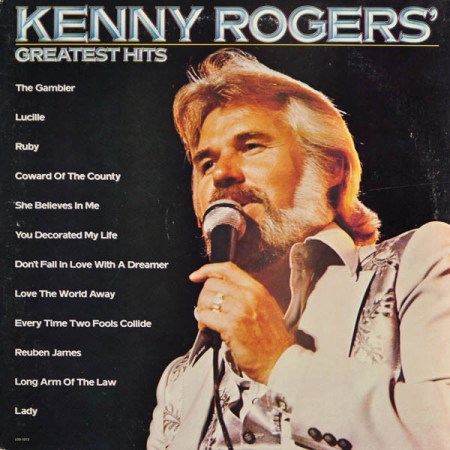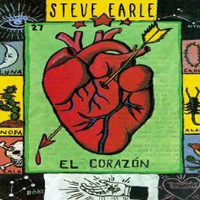
“It’s Not Dark Yet, but it’s getting there.” — Bob Dylan
My friend Sandy posted something on her blog, Frazzled Daisy, about losing power for a few hours last night thanks to remnants of Hurricane Laura.
Her post brought back memories of when the power would go out when I was a kid, either because of thunderstorms, tornadoes, hurricanes or ice storms, and the things my family and I would do to pass the time without electricity.
It also inspired me to pick out a dozen of my favorite songs about the dark, or at least that incorporate “dark” or “darkness” in the title. I’ve listed them in reverse from No. 12 to No. 1.
I’m sure I’ve failed to list some that others would include, but these are those that meant the most to me.
Enjoy. Or don’t. Either way, if you got this far, thanks for reading.
12. Whistling In The Dark, They Might Be Giants
This is a strange little tune – aren’t they all – off the band’s 1990 seminal release, Flood. Whistling in the dark is an oft-used phrase that holds numerous meanings, usually in reference to oxymorons or paradoxes. To speak knowingly of something despite possessing little actual knowledge about the subject. Or scraping up the courage to deal with a frightening, life-threatening or life-altering situation.
11. Promises In The Dark, Pat Benatar
The first lady of 1980s rock wrote this song with her guitarist and future husband Neil Giraldo. The subject matter is the scars from prior relationships and how they affect lovers’ current relationship.
“Just when you think you got it down, … Your heart securely tied and bound, … They whisper, promises in the dark.”
10. The Dark Side Of The Street, The Flying Burrito Brothers
A 1967 soul song written by Dan Penn and Chips Moman, this tune has been recorded by a number of prominent artists I listen to – Percy Sledge, Linda Ronstadt, Ry Cooder, Aretha Franklin, Richard & Linda Thompson, Gregg Allman and Elvis Costello, to name a few. But it’s the version by the late Gram Parsons and his Flying Burrito Brothers that I’m talking about.
9. Dark Star, Crosby, Stills & Nash
A popular non-single off the trio’s No. 2 album CSN from 1977. Stephen Stills wrote and sings lead on this tune, which like many of his at the time dealt with his marital issues.
8. On The Dark Side, John Cafferty and the Beaver Brown Band
This Springsteen-esque tune actually predated Born In The USA as it was released along with the movie “Eddie And The Cruisers” in 1983. Cafferty and crew were originally credited on the soundtrack as Eddie And The Cruisers. The move was a dud, staying in theaters for a whopping three weeks. And the song didn’t do much better, reaching No. 64 on Billboard Hot 100 chart. But when the move was re-released to video, the song shot to No. 7 on the Hot 100 and No. 1 on the Rock Tracks chart. And it’s been repeatedly made famous at venues like Crybabies and The Fillin’ Station when my buddy Ken Szarek belts it out on karaoke night.
7. Shot In The Dark, Ozzy Osbourne
Written by Ozzy and bass player Phil Soussan, the song off 1986’s The Ultimate Sin album was one of Osbourne’s biggest chart hits. Soussan originally wrote the song with references to the 1964 Pink Panther film A Shot In The Dark. Ozzy reportedly changed the lyrics to make the song more night stalker-esque.
6. Dark As A Dungeon, Johnny Cash
A coal-mining lament written by country singer-songwriter-guitarist Merle Travis, it’s been covered by a who’s who of Americana artists – Cicso Houston, Tennessee Ernie Ford, Harry Belafonte, Grandpa Jones, The Nitty Gritty Dirt Band, Dolly Parton, The Weavers, The Seldom Scene, The Chieftains, Kathy Mattea, Willie Nelson, Vince Gill, John Mellencamp and Bob Dylan only name about half. But it was Johnny Cash’s version from At Folsom Prison that is the ultimate. During the performance, several inmates start to laugh, causing Cash to chuckle and address them, “No laughing during the song. … It’s being recorded, I know, … Hell!” After the song, Cash makes the announcement, “I just wanted to tell you that this show is being recorded for an album released on Columbia Records, so you can’t say ‘hell’ or ‘shit’ or anything like that.”
5. Dark Hollow, The Grateful Dead
A 1958 folk song written and recorded by Bill Browning, the tune received two late-60s reworkings by bluegrass stars Mac Wiseman (1967) and Dr. Ralph Stanley (1969) and was later often covered by the likes of Bill Monroe and The Del McCoury Band. But the Dead’s Jerry Garcia and Bob Weir made this their own on the 1973 live album History of the Grateful Dead, Vol. I (Bear’s Choice), though it was originally recorded Valentine’s Day 1970 at Fillmore East in New York City.
“I’d rather be in some dark hollow, where the sun don’t ever shine, … Than to be in some big city, in a small room with you on my mind.”
4. Fishin’ In The Dark, The Nitty Gritty Dirt Band
Written by Wendy Waldman and Jim Photoglo, this 1987 ditty was The Dirt Band’s third No. 1 song, and the single has since gone platinum. I always found it interesting … many of the girls I knew in college of the sorority persuasion would talk of how they abhorred country music. Until you played this song. And then it was like someone screamed, “Hey white girls, let’s sing “Grease” songs at karaoke.” On another note, this is what Wikipedia has to say about the song’s content: “The premise of the song is a couple contemplating a late-night fishing expedition. Specifically, the adventurers plan to make their way to an undisclosed river and chart constellations during an evening in which a full moon is present. Furthermore, the tentative date for this excursion is set in the late spring to early summer.” Come on. We all know this song has nothing to do with fishing.
3. Darkness On The Edge Of Town, Bruce Springsteen
The title track from Springsteen’s fourth studio album, this 1978 song is emblematic of The Boss’ moving away from the romantic and youthful lyrics about escaping with girls in cars and toward the adult world where his song’s characters make a decision to stand their ground and fight for whatever it is they desire. And the consequences of winning and losing those fights. And it’s easily one of my top 10 favorite Springsteen songs.
“Well now some folks are born into a good life, and other folks get it anyway, anyhow, …
Well now I lost my money and I lost my wife, them things don’t seem to matter much to me now.
Tonight I’ll be on that hill ’cause I can’t stop! …
I’ll be on that hill with everything I got! …
With lives on the line where dreams are found and lost, I’ll be there on time and I’ll pay the cost, …
For wanting things that can only be found …
In the darkness on the edge of town.
In the darkness on the edge of town.”
2. Not Dark Yet, Bob Dylan
You knew there would be a Dylan song on here somewhere. A song on 1997’s masterpiece Time Out Of Mind, which won three Grammys, it was the album’s first single. I’ve read some things saying his writing on this song was inspired by Keats. Who knows? I don’t care. I care more that this was one of the three dozen or so songs featured over the closing credits on the three seasons of HBO’s Deadwood, a favorite of mine. It appears in Season 2, Episode 1, if you care about such things. It’s also mentioned in the movie High Fidelity, also a must-see. This is just a damn good song.
“She wrote me a letter, and she wrote it so kind. She put down in writing what was on her mind. I just don’t see why I even care. It’s not dark yet, but it’s getting’ there.”
1. Dancing In The Dark, Bruce Springsteen
If you know me, you had to know this would be No. 1. There are better songs on this list. But this one holds the most meaning. Written by Springsteen as an afterthought in a couple of hours, it was the biggest hit on the album that changed my musical world. And it was literally playing on the anesthesiologist’s radio when my son Dylan came into this world. It’s an upbeat pop song on an album full of songs that are depressing. But like the title track Born In The USA, the up tempo and passionate delivery belie the song’s true meaning. It’s an incredibly sad song. In Mary Chapin Carpenter’s cover version of this song, a 1990s live B-side, she introduces the song as a “bummer sad song by someone else.” (On a side note, find this version and listen!) Unfortunately, the emotions in this song are emotions with which I’m familiar.
“You can’t start a fire sitting around crying over your broken heart. Well, this gun’s for hire, even if we’re dancing in the dark.”
Oh, did I forget to mention Courtney Cox?

